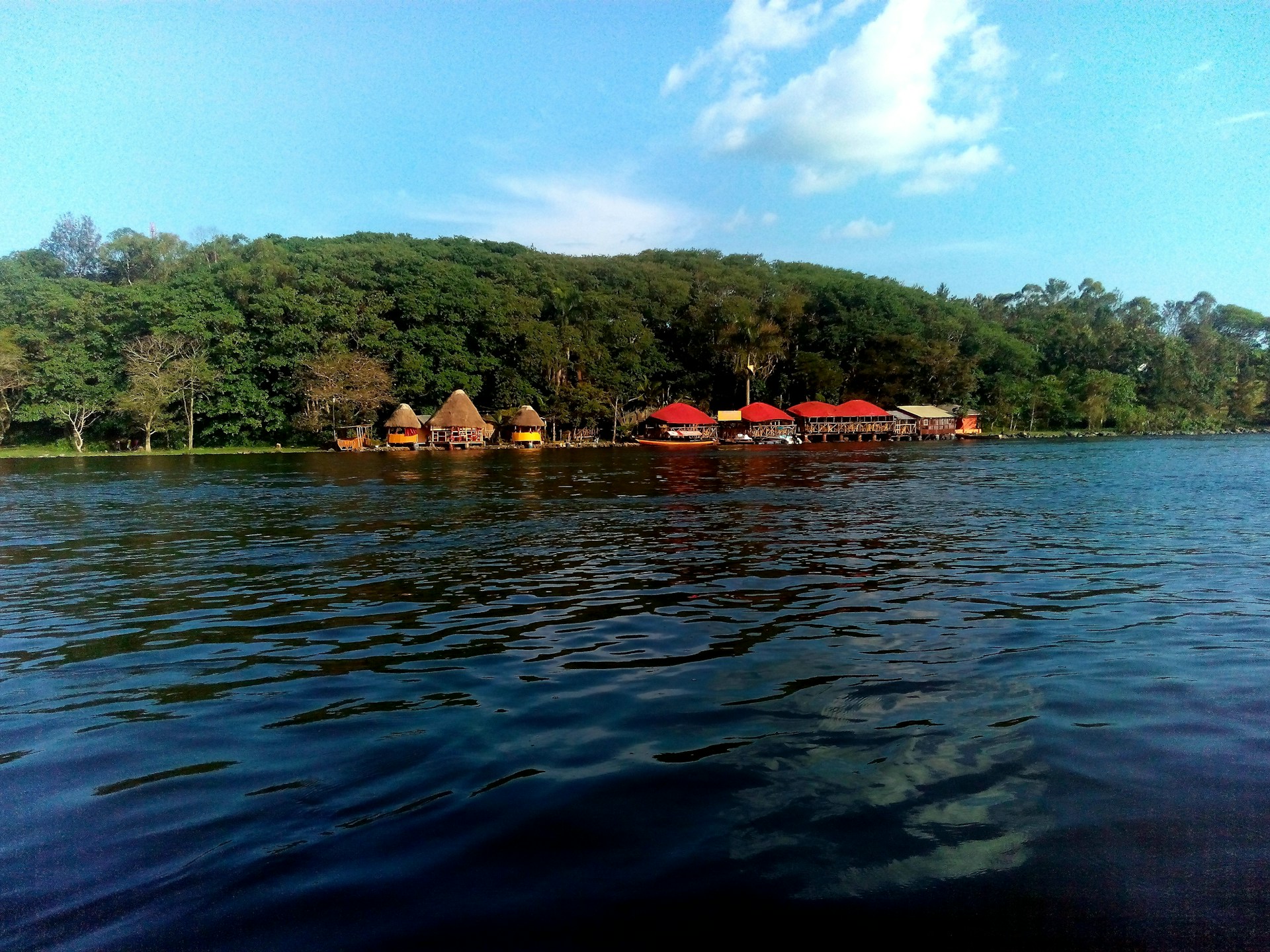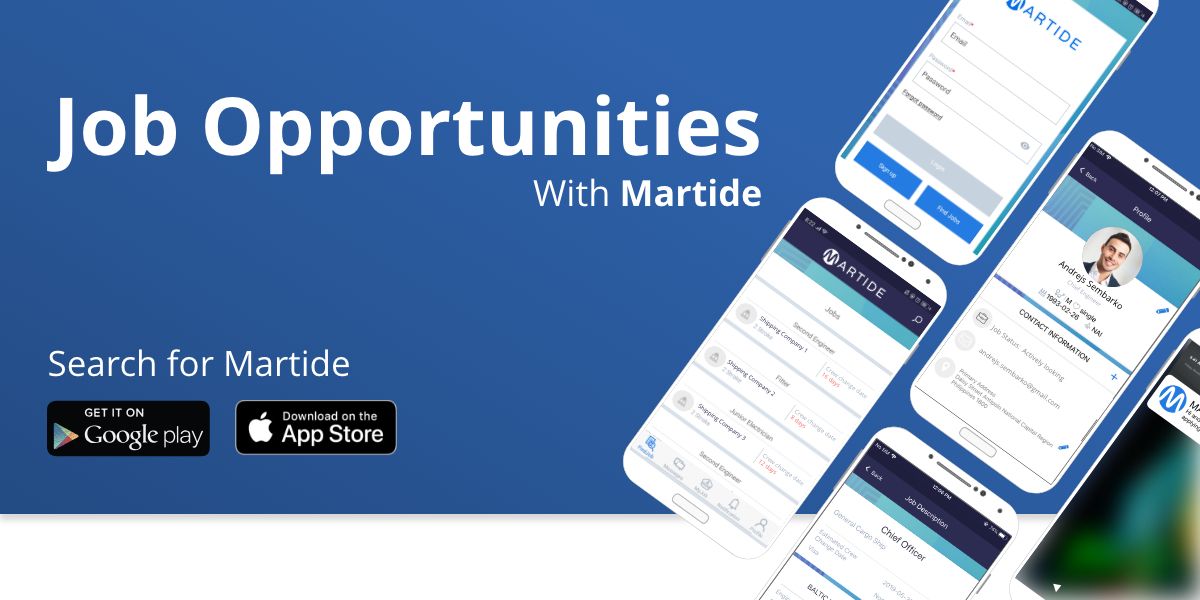The Evolution of the Maritime Industry & Jobs at Sea

It wouldn’t be too much of an exaggeration to say that the maritime industry and jobs at sea are almost as old as time itself.
The act of transporting cargo by sea has been around for millennia: fascinating fact, the earliest example of a sailing ship was found on a painted disc in Kuwait and dates back to the late 5th millennium BCE.
Fast forward to 1000 BCE, and Austronesians inhabiting what is known as Maritime Southeast Asia were regularly trading with South Asia, the Middle East, and China.
The history of the maritime industry and working at sea
The Austronesians introduced the earliest sailing technologies to these areas, as well as freights of previously unknown plants and fruits. But while cargoes of peppers, coconuts, spices and bananas may still be transported by sea today, it would be fair to say that sailing technology has developed exponentially since those far off days.
Shipping and the development of civilization
Sailing has had a huge impact on civilization's development and of a seafarer's life at sea.
Read more:Discovering the World's Best Maritime Museums
With the advent of shipping, mariners were suddenly able to travel far further than land based travel had allowed. Of course, commercial travel for leisure purposes didn’t happen until much later on the global timescale, but now humans had the capacity for international trade - and of course for naval warfare.
And while shipping’s influence on the world cannot be understated, it is the development within the maritime industry that we are going to take a closer look at.
The shipping industry is seen by many, both within the sector and outside of it, as notoriously slow to adopt change. There could be any number of reasons for this perceived lack of interest in modernizing, including an attitude of ‘it it ain’t broke, why fix it?’

That shipping has been around, and has been transporting people and cargo across the globe for centuries isn’t under dispute. However, like many traditional industries a willingness to embrace new technologies is crucial if shipping companies are to remain competitive.
Early technological advances in shipping
One of the most obvious advances in maritime technology is, of course, the magnetic compass. And we can’t help but wonder if any of the mariners of yesteryear were as opposed to this ‘new fangled’ piece of equipment when it was introduced as some seafarers are to modern technology!
Read more: What is the Definition of Maritime?
Unfortunately there’s no definite date pinpointing when the compass was invented but it is generally believed to be during China’s Han Dynasty - in other words around 206 BCE.
The Chinese military were using the compass during the Song Dynasty (960-1279) for navigational orienteering in around 1040, and it was being used as an aid for maritime navigation some time between 1111 and 1117.
The first mention of the magnetic compass was in a book of essays written in 1088 by a Chinese writer named Shen Kuo - who also happened to be the man responsible for documenting the concept of true north.
Changing the future through shipping
Of course, just like maritime technology, the vessel itself has changed dramatically since it was first invented. The earliest recorded use of boats dates back to 4000 BCE in ancient Egypt, however illustrations show that the evolution of the vessel was actually fairly slow, only picking up steam - quite literally! - in the last 150 years.
These early Egyptian vessels often featured both sails and oars: the earliest of these boats usually had one square sail and a single level of oarsmen. This was adequate in the early days of shipping when these boats only traversed the River Nile but as they ventured out onto the oceans it became necessary to add more levels of rowers to better control the boat. Life at sea wasn't easy!

In those days, the design of a cargo ship was based upon its need to carry as much tonnage of goods with as few crew members as possible.
But as more power and speed was required, more levels of oarsmen were added, and ships subsequently became taller. It thus became apparent that the longer oars needed to reach the ocean were impractical to handle and ineffective due to the loss of force.
It was then that ship design became a critical enterprise.
Geography also played a part in ship design and construction with northern European vessels normally constructed in a clinker style, with the hull built from timbers that overlapped. Carvel construction - the planks lying flush against one another - was preferred in the Mediterranean.
The introduction of the dual mast
It was at this point that the single square sail began to see new innovations, becoming more convoluted and created with the ability to pivot on the mast in relation to the direction of the wind.
The direct correlation between the number of sails and the speed a vessel could travel at meant that the single masted ship’s days were numbered and by 1200 sailing ships in the Mediterranean boasted dual masts.
At the same time, the Chinese were starting to embrace water as a way to transport goods and were developing what would become known as the junk.

From its humble beginnings as a dugout canoe, this iconic vessel introduced the world to some real progress in ship design. This included the implementation of a box that extended through the deck and the bottom of the boat with a rudder on the centreline, thereby optimizing control.
The golden age of sail in the maritime industry
By the start of the 15th century fully rigged ships were becoming commonplace. These had three masts with five or six sails and were vital in enabling shipping companies to trade further afield.
To facilitate the addition of more masts, hulls were lengthened and it wasn’t uncommon for a keel to be more than twice the length of a vessel’s width. At the turn of the 15th century, bigger ships weighed approximately 300 tons, but by 1425 they were more than double that, weighing in at around 720 tons.
By the 19th century the north Americans had joined the race to create the perfect trading vessel, developing hulls that were built for speed combined with three masts and huge sails.
Despite this, by 1840 it had become apparent that the sun was setting on the heyday of the age of sail and sailing ships thanks to steamships, which first started appearing in the late 1700s, poised to take over.
At first steam engines were powered at approximately 14.7 pounds per square inch - which is normal sea-level atmospheric pressure. But there was an issue with this as the colossal cylinders that were needed made these huge engines immobile and extremely heavy.
On the plus side, it meant that ships could be drastically increased in size.
Changing jobs at sea with steam
While the first steamboats - such as the famed Mississippi river boats - tended to be paddle steamers and were more suited to rivers, or interior waters and coastal bays, in 1809 a steamboat undertook the first ocean bound voyage, travelling 150 miles between New Jersey and Delaware Bay.

After this, slowly but surely, more countries began experimenting with the use of machine powered boats for passenger transportation. Life at sea had started to open up to the masses. Progress ensued and technical upgrades were made to the steamboats.
Efficiency was improved by using higher pressured steam and double- and triple-expansion engines. However there was a limit to the speeds that ships with piston engines could reach and any machinery failures were liable to result in some serious engine damage.
Meanwhile evolution in the construction of vessels was also taking place. Wood was replaced by iron, which was in turn displaced by steel as the construction material of choice for cargo ships.
And while steam was the main source of power, from as early as 1903 some ships were running on diesel engines. Diesel internal-combustion engines were more economical in terms of fuel consumption and their usage increased dramatically post-1973 when petroleum costs rose sharply.
Changes in maritime training and skills
As the maritime industry changed, the ways that ships evolved and their construction and technologies did too - albeit it slowly and over hundreds of years.
And so too, therefore, did the job requirements for seafarers. Just as the crews of yore in the age of sail had to develop their skills to deal with the addition of full rigging, extra sails or combustion engines, today’s seaman is also having to grapple with changes in his or her role.
With everything from changing environmental regulations to cyber threats to the pressure to digitize to align with partners in other industries, today’s shipping industry is light years away from its humble beginnings and the age of sail.

As we’ve mentioned, the maritime industry is infamous for being slow to adopt change but shipping companies that are resisting change are going to have to pull their socks up if they want to remain competitive and relevant.
That means that seafarers who want to stand out from the crowd will need to add some additional strings to their bow when it comes to finding a good job in shipping.
Of course, traditional values such as a strong work ethic, determination and problem solving skills will always be at the core of what makes a good seaman but these days candidates who have some technical skills will certainly be at an advantage.
That also means that ship owners and managers are going to have to address this issue by helping new recruits and existing crew develop new skills through onboarding inductions, training and on-going, on-the-job learning.
On the same subject, the manner in which crew are trained is also changing the future. For example, gamification and simulator based training are now playing a valuable role in training seafarers by allowing them to hone their maritime skills while on board a vessel.
These methods promote engagement by using concepts usually associated with video games, such as point scoring, rules of play, and competing against others.
Tech developments in the maritime industry
With the maritime industry being so traditional, and not to mention highly regulated, many of those working within the sector have a deep seated resistance to change and trying to propose disruptive technologies can be no easy task.
From basics that employees in other industries take for granted, such as access to WiFi, to innovations such as autonomous ships, technological developments in the maritime industry are varied.

Autonomous ships and drones
An autonomous ship is an unmanned vessel that is controlled remotely from a land-based virtual bridge. A number of countries are trialing the viability of sailorless ships and while our oceans may not be teaming with them just yet, the likelihood is they will become a reality.
Drones are also making waves in the maritime industry and are being lauded as a solution to safety and security issues.
Drones can also slash the time and costs associated with determining any defects on the ship so that they can be repaired, even at sea.
When it comes to security on board, a roving drone can also be used to gather more valuable data than fixed cameras.
They are also able to operate in environments and conditions that may be unpleasant or dangerous for humans.
Blockchain technology in the maritime industry
In these days of cyber threats and data theft, a physical handwritten ship’s log is no longer an efficient or secure means of recording the important events that occur during day to day life on board.
One way of ensuring the safety and privacy of data is blockchain technology which has the potential to revolutionize the maritime industry.
Blockchain was originally developed as a virtual ledger for the crypto-currency Bitcoin. Now it is so much more than that and is best summarized as an online filing system.

Ideal for data that needs to remain protected and uncorrupted and that can be shared and viewed in real time, it can make checking goods quicker, enable real time tracking of shipments, and eliminate the filling out of paper-based forms.
Seafarer jobs and roles being redefined
When it comes to concerns about technology changing the future within the maritime industry one of the complaints often voiced by detractors is the potential loss of seafarer jobs.
But will seamen be laid off en masse or will their job roles merely be redefined?
Industry insiders say that seafarers need not panic as human crew will always be needed. In fact you only need to take a look at our maritime job vacancies to see how many open jobs at sea there are for crew of all ranks!
The fact is, self-driving ships are a long way off and Artificial Intelligence is instead currently being used to help automate repetitive or risky tasks on board.
The knock-on effect of this is that some seafarer jobs will be replaced by technology, but there will also be a new need for crew members who possess more specialized sets of skills. In particular the skills required to develop, code, run, operate, manage, maintain and repair nautical systems, software and programs.

There’s no doubt that the maritime industry has changed dramatically since our ancestors first pioneered shipping as a means for transporting cargo - and the recent rash of change after hundreds of years of sluggish evolution is only set to increase.
For example, seafarers looking to upscale their life at sea and career with a change of role should download our free mobile app from Google Play or the App Store and take a look at our vacant jobs at sea.
Meanwhile ship owners needing to upgrade their systems should talk to Martide today and see how we’re helping 21st century shipping companies meet their future with streamlined applicant tracking systems and collaboration between teams.

Eve Church
Eve is Martide's content writer, publishing regular posts on everything from our maritime recruitment and crew planning software to life at sea. Eve has been writing professionally for more than two decades, crafting everything from SEO-focused blog posts and website landing pages to magazine articles and corporate whitepapers.
UK



